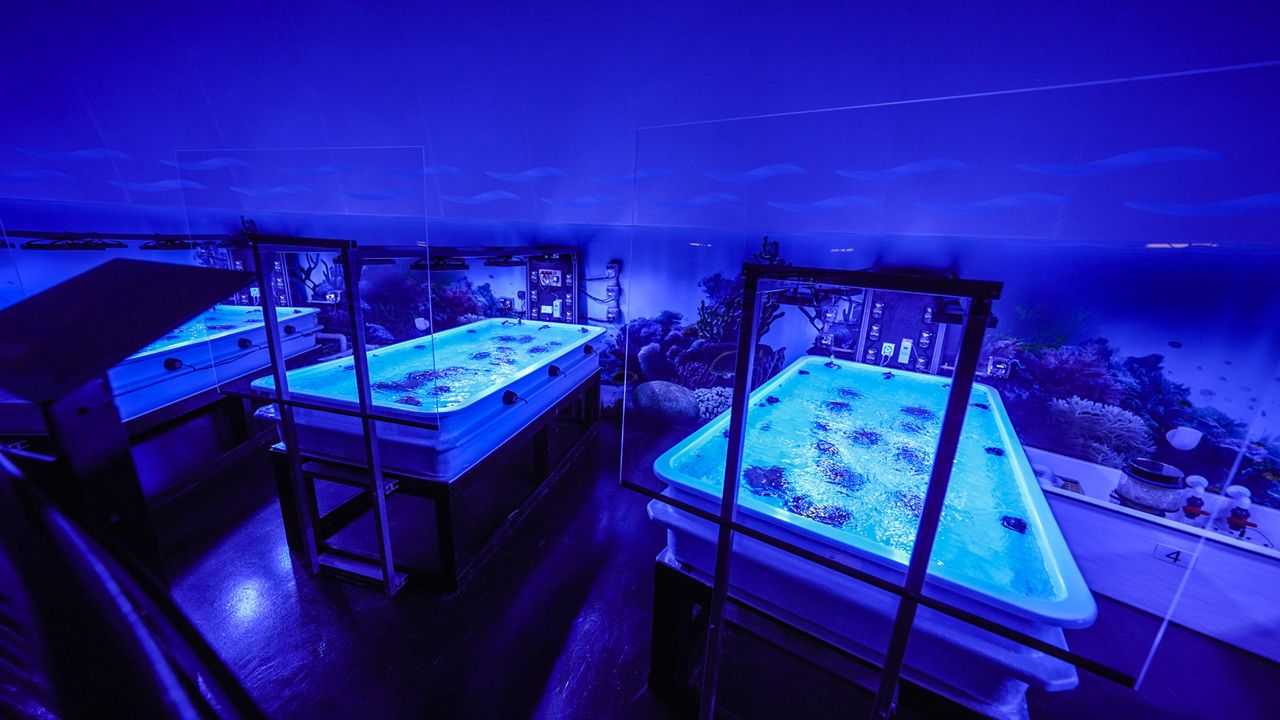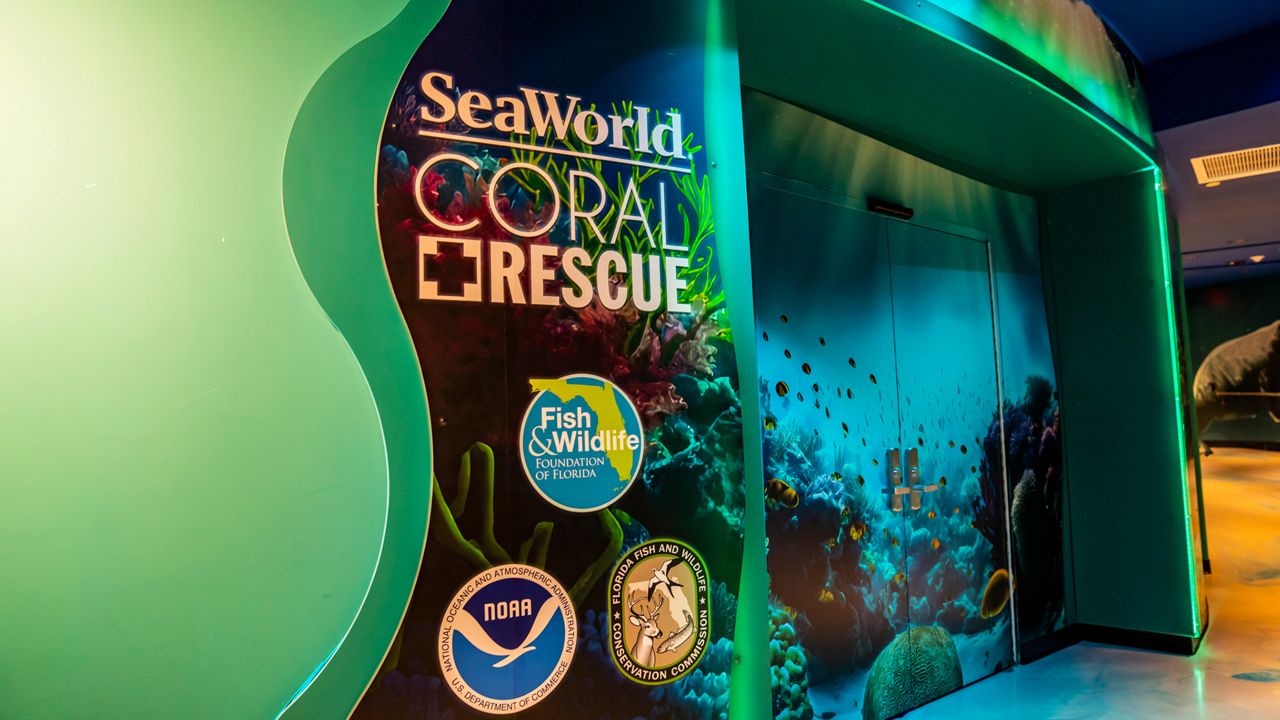ORLANDO, Fla. — As part of its ongoing conservation efforts, SeaWorld Orlando opened a new Coral Rescue Center at the park on Friday.
What You Need To Know
- SeaWorld Orlando has opened its new Coral Rescue Center
- The facility houses 350 coral colonies and 15 different species
- Park visitors can see the corals and also learn about the work biologists are doing behind the scenes
The center, which is one of the largest public-facing facilities in the country dedicated to coral conservation, houses 350 coral colonies and 15 different species — many of which are listed as threatened under the U.S. Endangered Species Act.
At the facility, visitors can learn about current conservation efforts to restore coral reefs as well as the important work biologists at SeaWorld are doing behind the scenes to care for the corals.
SeaWorld said the center is equipped with technology such as water filtration and special lighting to ensure the corals thrive.

Corals featured in the center have been transported from Orlando’s Florida Coral Rescue Center, a 2,000-square-foot nursery that cares for at-risk corals in hopes of repopulating Florida’s Coral Reef. That facility is part of a collaboration between the Association of Zoos and Aquariums, SeaWorld, Disney and the Fish & Wildlife Foundation of Florida.
“By raising awareness about the importance of corals and their role in the environment, we hope to ignite a passion for conservation in our visitors, empowering them to become ambassadors for the protection and preservation of Florida’s corals,” said Jim Kindler, SeaWorld zoological curator and Florida Coral Rescue Center manager, in a news release.
Florida’s Coral Reef is a 350-mile reef tract that stretches from the Dry Tortugas in the Gulf of Mexico to the St. Lucie Inlet in Martin County. The reefs have been ravaged by stony coral tissue disease, which was first reported off the Florida coast in 2014.



